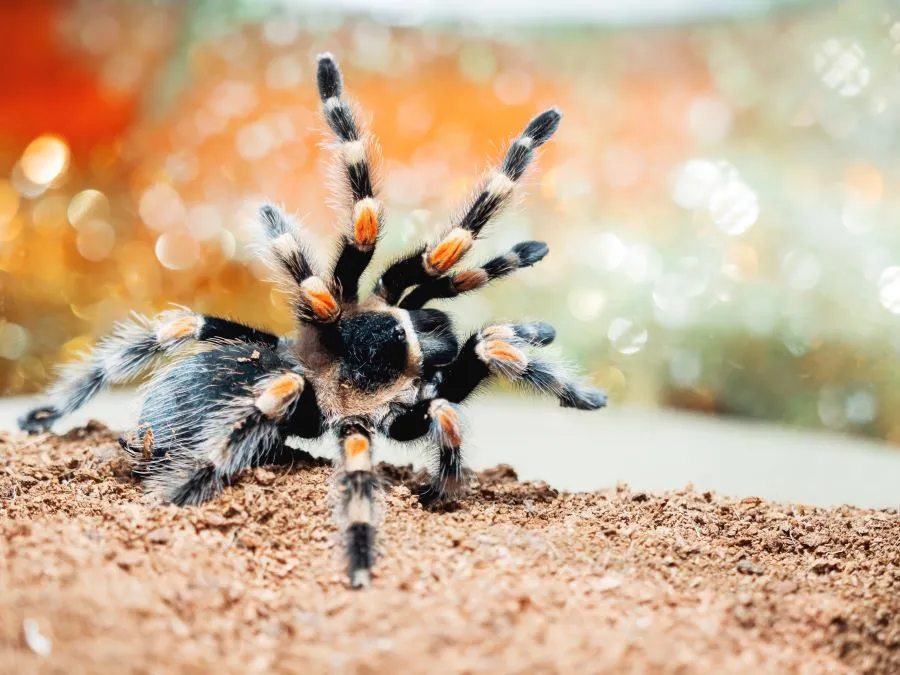What is Tarantula Dance
The term “tarantula dance” describes a collection of behaviors shown by tarantulas, which are big, hairy spiders belonging to the Theraphosidae family. These dances are not synchronized routines but rather a series of movements that serve different purposes. By understanding this complex behavior, you can understand these interesting creatures. By observing these actions, you gain an exclusive window into their world, learning about their communication methods and survival strategies. To learn why tarantulas dance and how to observe these amazing creatures, you need the right knowledge and understanding.
Understanding Tarantula Dance
Tarantula dance includes a variety of behaviors. It ranges from the subtle movements seen during mating rituals to the dramatic displays during self-defense or molting preparation. These actions are driven by instinct and the environment, providing a fascinating look into their lives. These dances are not for entertainment. They result from natural instincts developed over millions of years. These specific actions, when observed, can provide information about their well-being and state.
The Purpose of Tarantula Dance

The purposes of a tarantula dance differ. Some are critical for attracting a mate, while others are about protecting themselves from predators. Recognizing these purposes is key to understanding these creatures’ needs. Understanding the “dance” gives observers the ability to provide better care for captive tarantulas and a deeper appreciation for these creatures in their natural environments. Each movement has a meaning, and understanding each one is key to having a better understanding of tarantulas.
Why Do Tarantulas Dance
Tarantulas dance for a variety of reasons, all of which are connected to survival and reproduction. These behaviors are not random; they are rooted in instinct. The motivations behind a tarantula’s dance provide critical clues about its immediate needs and long-term goals. Some dances are about courtship, some are about survival, and some are about adapting to their environment.
Mating Rituals
Male tarantulas do elaborate dances to attract females during mating season. These dances can include vibrating their bodies, drumming on the ground, or waving their legs. The male’s dance demonstrates his fitness. The female evaluates the male’s dance to decide if she wants him as a mate. Once accepted, the dance transitions into a more intimate phase as they prepare for mating. This courtship ritual shows their biological drive to reproduce. (See image of tarantula mating)
Self-Defense Mechanisms

When threatened, tarantulas may exhibit defensive behaviors that can appear like dancing. This includes rearing up, displaying their fangs, or flicking urticating hairs (in some species). These behaviors serve as warnings to potential predators. They are a form of communication, warning the aggressor to back away. This “dance” shows a clear sign of distress and a means of self-preservation.
Molting Preparation
Before molting (shedding their exoskeleton), tarantulas may appear to dance or move erratically. They might flip onto their backs, wiggle, or stay in awkward postures. This preparation phase is vital for the new exoskeleton. These behaviors indicate vulnerability and are a precursor to the molting process. These erratic movements help them escape their old exoskeletons. (See image of tarantula molting)
How to Observe Tarantula Dance
Observing tarantulas can be an exciting learning experience. Knowing how to spot each dance form is essential to understanding the circumstances. You must know how to approach observation properly to ensure the safety and well-being of the tarantula and yourself. A good observation will teach you about their habitat, diet, and behavior, giving you a better understanding of their fascinating lives.
Identifying the Dance

Recognizing the type of dance is vital for proper interpretation. Look for specific movements, postures, and contexts in which the dance occurs. Mating dances are usually deliberate and repeated. Self-defense displays are aggressive and rapid. Molting preparation is often slow and awkward. Identifying the behaviors will reveal the reason for the dance. This analysis will help you fully understand the behavior.
Setting Up an Observation Environment
Setting up a good observation environment is important. This includes using a clear enclosure, minimizing disturbances, and providing adequate lighting. Avoid sudden movements, loud noises, and other stressors. Observe from a distance and keep the environment stable. This will make the tarantula feel safe and secure, allowing its natural behaviors to occur. Then the observer can witness natural tarantula dance behaviors. (See image of tarantula habitat)
Things to Avoid During Observation
Avoid disturbing the tarantula during observation. Do not handle the spider, make sudden movements, or introduce anything new into its enclosure. Do not use flash photography, as it can distress them. These actions can disrupt natural behavior and pose a risk to your safety. Patience and respect are key to successfully and safely observing the dance.
Caring for a Dancing Tarantula

Proper care is vital for any tarantula, especially when it displays dance-like behaviors. This includes ensuring their environment is suitable for its needs. This environment will help them thrive, whether in a natural habitat or as a pet. These care aspects ensure that these creatures live a long, healthy life, allowing you to observe and appreciate their unique behaviors.
Providing a Suitable Habitat
A suitable habitat is essential for a tarantula. The habitat must replicate its natural environment. Provide an enclosure of the right size, substrate, and temperature. Include hiding places and ensure adequate ventilation. These elements will make the tarantula feel safe. This safe environment will support healthy behaviors, including their dance. (See image of tarantula habitat)
Feeding and Hydration
A proper diet and hydration are vital for a healthy tarantula. Offer appropriately sized insects regularly. Provide fresh water in a shallow dish. Monitor their eating habits and adjust as needed. Be sure to meet your tarantula’s nutritional needs. A well-fed and hydrated tarantula will be more active and show natural behaviors. (See image of tarantula feeding)
Handling and Interaction

It is best to avoid handling tarantulas unless necessary. If handling is necessary, do it cautiously and slowly. Be aware of their defensive behaviors. Avoid sudden movements and handle them over a soft surface to prevent injury. Minimize stress, which can affect their well-being. Respecting their space and needs is the most responsible way to interact with them.
The Future of Tarantula Dance
Studying and preserving tarantula dance involves conservation, research, and education. These efforts will help us better understand and protect these amazing creatures. By advancing scientific knowledge and promoting responsible practices, we can ensure that tarantulas continue to thrive. This will enhance their survival in the wild and in the care of enthusiasts.
Conservation Efforts
Conservation is key to protecting tarantula populations. This involves habitat preservation, fighting illegal trade, and raising awareness. Support organizations that promote tarantula conservation. These organizations protect their habitats and educate the public about the importance of these species. This will help safeguard the tarantula dance for future generations.
Research and Studies

Ongoing research is vital for understanding the full scope of the tarantula dance. Support scientific studies that delve into their behaviors, communication methods, and ecological roles. These studies help inform conservation strategies. Research can also provide valuable insights for tarantula care and the development of new conservation measures. (See image of tarantula research)
In conclusion, the “tarantula dance” is a complex set of behaviors. This guide offers essential insights into their world. By understanding the “why” behind these dances, you can appreciate their beauty. Observing, caring for, and conserving these creatures is fascinating. Through knowledge, we can preserve these amazing arachnids.
